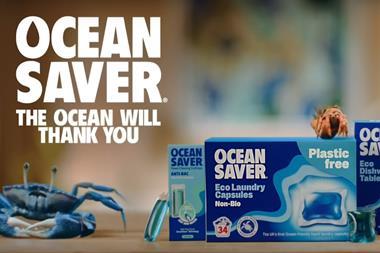Tuna caught by pole and line has a carbon footprint over four times higher than tuna caught by the more industrial purse seine method, a new study has revealed.
The Dalhousie University study mapped carbon up to point of landing. It concluded that tuna fisheries using purse seine gear - which involves nets and often FADs (flotillas which attract tuna but also non-target species) - burned 368 litres of fuel per live weight tonne of landings.
In contrast, fisheries using pole and line were found to burn 1,490 litres per tonne.
The study is a blow for suppliers and retailers who upped their pole and line sourcing to enhance their sustainability credentials. For example, all of Sainsbury’s own-label canned tuna is caught using pole and line.
Sainsbury’s said it was aware of the relative efficiencies of the methods, and had discussed mapping of carbon with its pole and line suppliers. “We believe the benefits of pole and line outweigh those of purse seining on FADs in particular in respect to bycatch,” said Sainsbury’s head of Aquaculture and Fisheries manager Ally Dingwall.
The ISSF, a US NGO that supported the study and counts Princes and John West owner MW Brands among its founding members, said there were “no silver bullet solutions”.
The study is based on data from purse seine vessels primarily targeting skipjack and yellowfin, and pole and line vessels targeting albacore and Bluefin.
Close menu
- Home
- Retail & Wholesale
-
Products & Suppliers
- Back to parent navigation item
- Products & Suppliers
-
Product Categories:
- Back to parent navigation item
- Product Categories:
- Alcoholic drinks
- Bakery
- Cereals & breakfast
- Cheese
- Chicken & poultry
- Chocolate
- Confectionery
- Crisps, nuts & snacks
- Dairy
- Fish
- Fresh produce
- Frozen
- Household
- Meat
- Own Label
- Sauces & condiments
- Seasonal
- Soft drinks
- Vaping
- Vegan & plant-based
- World foods
- Suppliers
- People
- Reports & Data
-
Topics A-Z
- Back to parent navigation item
- Topics A-Z
-
Popular topics:
- Back to parent navigation item
- Popular topics:
- Cost of living crisis
- Crime
- Deposit Return Schemes
- Finance
- Government & Regulation
- Health
- Inflation
- Loyalty
- Marketing
- Mergers & Acquisitions
- New Product Development
- Sourcing
- Supply chain
- Sustainability & environment
- Technology
- Ultra Processed Foods
- Vaping
- A-Z all topics
- Content by type:
- Events
- Subscribe now
Carbon cost of 'sustainable' pole and line tuna revealed
By Richard Ford2012-03-17T00:00:00+00:00
Sign in to comment on this article
Not logged in before? Register for FREE guest access today.
You will be able to:
- Read more stories
- Receive daily newsletters
- Comment on stories
Advert



















No comments yet